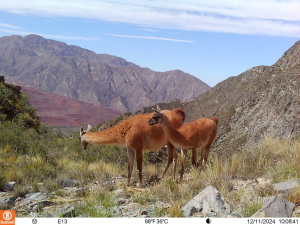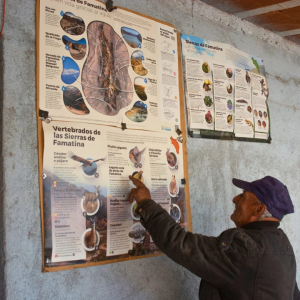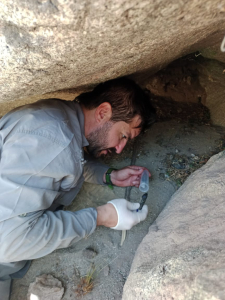By Claudina Gonzalez
There is a lot of talk about sustainable tourism. Public sector plans and programs, private products and enterprises, academic programs and curricula always and without exception include the concept of sustainability. A different discussion is whether this inclusion is merely declaratory or if it is accompanied by good, real, and verifiable practices.
What is certain is that the development of sustainable tourism is a continuous process that requires good planning as well as constant monitoring of its impacts, in order to introduce necessary preventive or corrective measures. Ideally, the tourist experience must be both satisfactory for the traveler and educational, understanding tourism as an opportunity to learn more about the natural and cultural environments, to value them, to protect them and to be able to transmit this message to others.
Each year, the United Nations World Tourism Organization (UNWTO) frames its work agenda with a theme. Recently, the United Nations General Assembly declared 2017 as the “International Year of Sustainable Tourism for Development” to highlight the potential of tourism and its contribution to the 2030 Agenda for Sustainable Development and its 17 Sustainable Development Goals (SDGs). That same year, the organization strongly supported the statement “Why Tourism Matters”. The evidence included sustainable tourism’s capacity to generate employment, its contribution to the global Gross Domestic Product, economic growth, promoting understanding between peoples, cultural conservation, the enhancement and conservation of the environment and development in general.

In Argentina, tourism constitutes an extremely dynamic sector of the economy. In 2018, the production of goods and services associated with tourism was 5.7% of GDP. Jobs associated with tourism were 1,269,070, or 6.2% of the total economy, in the sectors of hotels, restaurants, travel agencies, transportation companies for tourism purposes (commercial airlines, tourist trains, fluvial, maritime, automotive); and in the usage of beaches, recreational parks, reserves, museums, convention centers, fairgrounds and other spaces for the reception of visitors and related activities.
Tourism is an activity that is present and dynamic in all regions and, very importantly, it is mostly made up of micro, small and medium-sized companies (practically the entire sector: 99.1%).
Sounds promising, doesn’t it?
However, all this activity must be properly managed. Careful management, respectful of natural and cultural values, is a commitment that must be assumed by governments at different levels, but also by host communities, tourism companies and providers, civil society organizations and, very importantly, the travelers themselves.

With sustainability as a focus, nature can drive a resilient economy in the long term. International organizations such as the Inter-american Development Bank and the World Bank, as well as the World Tourism Organization, reaffirm the value of nature tourism and its role in sustainable development: for poverty alleviation; as a factor for economic growth; as a tool for biodiversity conservation; and in its contribution to the fulfillment of key international agreements and conventions, such as the aforementioned “Agenda 2030”.
Argentina has an amazing endowment of natural resources that, with local and regional distinctiveness, extends throughout the country, forming a natural capital of great wealth and a tourist attraction of enormous potential.
Argentina contains enormous environmental diversity, outstanding for encompassing an almost complete gradient of ecosystems that include lowland subtropical forests, mountain forests, semi-arid subtropical forests, flooded savannas, deserts, humid temperate forests, grasslands, high mountain, marine and polar ecosystems. It contains the Guaraní Aquifer -one of the main subterranean freshwater reservoirs; it has the second-largest number of glaciers of any Latin American country; and is among the 15 countries in the world with the largest ice-covered surface, which makes it one of the main strategic freshwater reserves in the world.
Natural protected areas are an enormous attraction for tourism. According to information from the Federal System of Protected Areas (SiFAP), the country has more than 500 registered protected areas, of different jurisdiction and management, representing 13.29% of the national continental territory, with a total surface area of 36,947,536 hectares. National parks, interjurisdictional marine parks, national reserves, nature reserves and natural monuments, provincial parks, nature reserves, provincial reserves, municipal areas, private areas, wildlife refuges, Ramsar sites, Biosphere Reserves and World Heritage Sites make up some of the country’s main tourist attractions.
This diversity of environments, terrestrial, freshwater, coastal and marine ecosystems, with their flora and fauna (vast collections of birds, fish, mammals, plants, amphibians and reptiles, among others), offers the possibility of thinking strategically about nature tourism as the engine of pandemic recovery, laying the groundwork for tourism to consolidate as an essential part of the national economy, framed within a broader agenda of sustainable development.

Nature tourism (including active tourism and ecotourism) was already one of the most developed tourism practices and one of the most in demand globally prior to the outbreak of COVID-19, with a growth rate three times higher than that of tourism in general, according to the UNWTO.
On the demand side, there are several social and demographic factors at the global level that explain this process of seeking nature and open spaces in travel: well-informed consumers with greater environmental awareness, on the one hand; and the densification and growth of cities, with lives marked by confinement in artificial spaces and affected by stressful situations, on the other. More than half of the world’s population lives in urban environments. This makes urban, artificial spaces routine and, by contrast, contact with nature in leisure time more valuable. In Argentina, the urban population is 92%. Unique and well-preserved natural settings, in contrast to other types of already saturated destinations, appear desirable and are highly motivating for this demand.
The natural scenery and the activities that take place in nature are desirable to tourists seeking transforming and memorable experiences in their travels. In addition to the above attraction factors, several studies point to the benefits of regular contact with natural spaces and the performance of activities in them, with positive impacts on physical and mental health.

From a developmental point of view, and given the enormous comparative advantages in terms of natural resources that characterize Argentina, a truly sustainable practice of nature tourism offers the opportunity to consolidate itself as an economically profitable and viable activity.
In addition, nature tourism tends to generate longer average stays and higher spending by travelers. The increase in the length of stay and expenditure variables can be explained, in part, by the variety of recreational activities that natural areas support. The greater the diversity of activities offered by a destination, the more attractive and interesting that area will be and, therefore, justify an extension of the stay with the consequent associated spending.
Sustainable nature tourism is, in turn, a vehicle for social development. This sector requires hiring local entrepreneurs and guides, and stimulates the development of tourism businesses (travel agencies, transportation, lodging, food, handicrafts, recreational and complementary activities), thus enabling the diversification of the productive matrix and the generation of local employment in many of the regional economies and communities that, in some cases are very neglected, and do not have the possibility of developing other productive activities.
At the same time, by including educational aspects and nature interpretation, it raises awareness among both locals and travelers about the importance of conserving natural environments, helping to minimize negative impacts on the environment.

In short, sustainable tourism (according to the UNWTO) is “tourism that takes full account of current and future economic, social and environmental impacts to meet the needs of visitors, the industry, the environment and host communities.”
With the exception of a minority of natural protected areas created and devoted exclusively to scientific research, monitoring and environmental conservation, most natural areas conceive, along with the conservation function, a social function provided by the public use of these spaces, taking into account their recreational and educational tourism value.
In the generation of new protected areas as well as the proper management of existing ones, tourism can be considered a compatible activity, which requires providing destinations with appropriate infrastructure that prioritizes the planning and conservation dimensions in the public use of these spaces, and that enables access to and allows for visitation and enjoyment of natural destinations that are perceived as valuable but are still emerging.
There is an opportunity in the development of nature tourism. But also, and inseparably, there is a duty: to include sustainability in the daily activities.

























